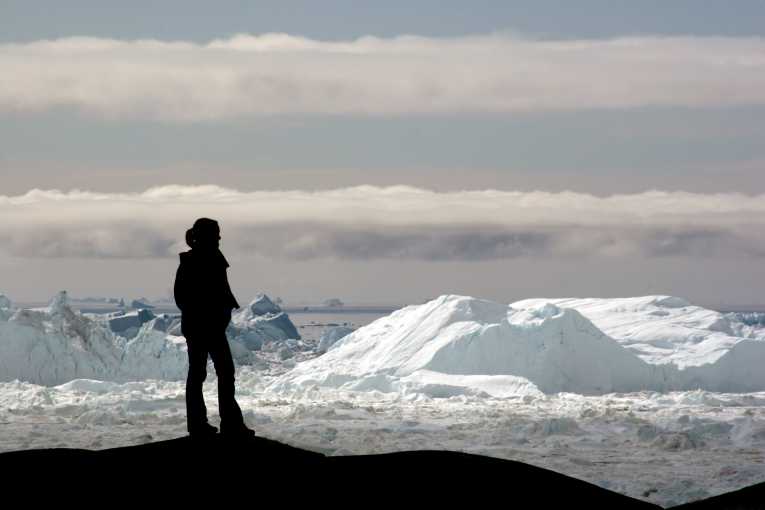Melting model for Greenland's accelerating ribbons of ice shows 'locked-in' sea level rise
The Greenland Ice Sheet, the second largest ice body in the world, looks likely to push up sea-levels in 2100 up by 3.5 inches, according to new research by glaciologists from the UK and US, published in the early online edition of the Proceedings of the National Academy of Science. With the IPCC previously 'taking a pass', in its assessment of Greenland's contribution to sea-level rise - due to poor understanding of how ice sheets would respond to global warming back in 2007 - this new paper is an important first stab at pinning down the slippery mechanisms of 'ice sheet dynamics'.
That importance lies with the fact that Greenland contains enough ice in its mile-thick ice sheets to ultimately raise sea-level by 24 feet. Understanding how those ice sheets will react in a warming world is critical, if we are understand the risks being taken with our greenhouse gas emissions. But, until recently, scientists have struggled to get a grasp of exactly what happens when ice sheets are put under 'thermal stress'.
One aspect of how ice sheets will respond to warming is fairly simple - to look at the projected temperature rises, and work out how much ice will melt, viewing the complex ribbons of glaciers as a giant block of ice. But over the last decade or so, glaciologists have come to appreciate that ice sheets are not gigantic lumps of 'static' ice; warming effects can cause them to act erratically and to move much faster than simple models suggest.
For example, warm sea-water can cause 'blocking' sea-ice shelves to collapse. Without these shelves holding back glaciers, they have been observed to speed up dramatically, losing vast amounts of ice in the process. A process of dynamic glacial thinning also seems to occur, running back-stream up the glacier, in response to the initial shock of the ice-shelf loss.
In order to try and work out how these dynamics play themselves, the team, led by Stephen Price from the Los Alamos National Laboratory, developed a computer model of the most recent changes in Greenland's biggest three glaciers. These have been fairly well studied since they started accelerating sea-wards in the mid-1990's, and the team were able to tune their models to match the observed data.
From this small set, they applied the resulting model to the wider Greenland Ice Sheet, in order to work out the expected sea-level rise just from the most recent observed changes - and so figure out a 'committed level of sea-rise'. That came out at 6mm of sea-level rise globally by 2100, including the surface melting component. But once the ongoing effect of warming shocks to the glacier front were modeled for the next 90 years, a maximum realistic sea-level rise from Greenland's ice-loss was 2 inches. And once the surface melting was included for the whole of the current century, that rose to some 3.5 inches.
Whilst these numbers are smaller than some recent estimates from other groups, the authors do admit to several uncertainties in their approach. They don't take into account the possibility that pulses of warm sea-water may become more frequent in triggering ice-shelf collapses - or that glaciers may speed up along their base due to penetrating melt-waters. The more certain answers on what Greenland's ice rivers will do to sea-levels across the world are likely to come from even more sophisticated computer models in the offing.










